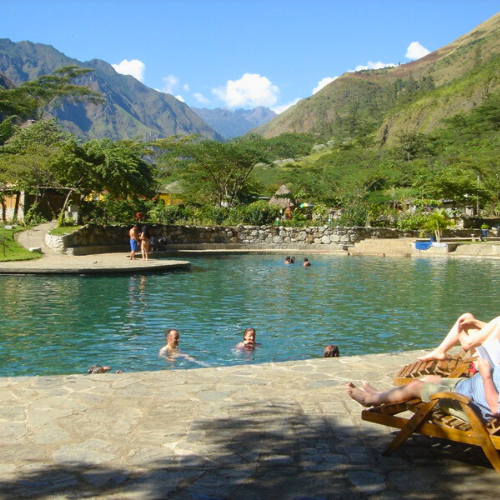The Salkantay Trek presents a moderate to challenging difficulty level, meaning it’s not a route for absolute beginners, but it’s not impossible for those with little physical preparation either. The main challenge lies in the altitude and the length of the hikes, which can last between 6 and 9 hours per day for 4 or 5 days.
The highest point of the route is the Salkantay Pass at 4,650 meters above sea level, where the air is thinner and the cold can be intense. From there, the trail gradually descends toward warmer areas, passing through cloud forests and high jungle, which also involves walking on uneven and humid terrain.
This hike doesn’t require professional mountaineering experience, but it does require physical endurance, strength, and especially, proper acclimatization before starting. Therefore, it’s recommended to spend at least 2 days in Cusco before the trek to adapt to the altitude and avoid altitude sickness.
The Salkantay snow-capped mountain stands at an impressive 6,271 meters above sea level. Located in the Vilcabamba mountain range in Cusco, it stands out not only for its geography but also for its deep spiritual value. For the ancient Incas, Salkantay was an Apu, a sacred mountain revered as a protector and source of life.
The snow-capped mountain is a global route as it is the central point of the Salkantay Trek, an alternative route to the Inca Trail that leads to Machu Picchu through varied landscapes like glaciers, turquoise lagoons, cloud forests, and high jungle.
Table of Contents
The Salkantay Trek is considered a moderate to high difficulty hike. It doesn’t require mountaineering experience, but it does require good physical condition and prior preparation. The route includes long hiking days of 6 to 9 hours per day across varied terrain, from cold high mountains to warm, humid high jungle.
One of the biggest challenges is the altitude since the highest point of the route is the Salkantay Pass at 4,650 meters. At this height, the air contains less oxygen, which can cause fatigue or even symptoms of altitude sickness if proper acclimatization hasn’t been done in Cusco.
Additionally, the weather is very changeable along the way. You may experience intense sun, extreme cold, rain, or strong winds. This requires travelers to be prepared both physically and mentally to adapt to the environmental conditions.

One of the main factors is the altitude. The highest point of the route, the Salkantay Pass, is at 4,650 meters above sea level. At this altitude, the body needs more effort to oxygenate, and there is a risk of suffering from altitude sickness if good prior acclimatization has not been done in Cusco.
The weather is another decisive factor. Throughout the trek, the traveler crosses microclimates that range from cold, dry mountain zones to warm, humid high jungle sections. Rain, especially between November and March, can make the path slippery and more demanding.
Physical condition is also key. Although being an athlete is not required, you do need endurance and to be used to long hikes, as daily walks range from 6 to 9 consecutive hours. The weight of your backpack, the quality of your gear, footwear type, hydration, and food during the hike also directly impact performance. Having a professional guide, good logistics, and a reliable operator greatly contributes to a safe experience.
| Area | Altitude | Typical Weather | Approx. Temperature |
|---|---|---|---|
| Soraypampa | 3,900 m a.s.l. | Cold, dry, possible snow or hail | Day: 5–15 °C / Night: -5 to 0 °C |
| Salkantay Pass | 4,650 m a.s.l. | Very cold, strong wind, occasional snow | Below 0 °C |
| Chaullay – Lucmabamba | 2,900–2,000 m | Temperate, humid, subtropical climate | Day: 20–25 °C / Night: 10–15 °C |
| Aguas Calientes | 2,040 m a.s.l. | Warm and humid, high jungle climate | Day: 22–28 °C / Night: 12–18 °C |

Acclimatization is one of the most important factors for a safe and enjoyable experience on the Salkantay Trek, as this route reaches elevations above 4,600 meters above sea level.
It is recommended to arrive in Cusco at least 2 to 3 days before the trek starts, to allow your body to gradually adapt to the altitude. During this time, it is ideal to do light activities such as city walks, visits to the Sacred Valley, or cultural tours, avoiding intense physical exertion.
Some common symptoms of altitude sickness include headaches, fatigue, insomnia, nausea, or lack of appetite. To prevent them, it is important to:
